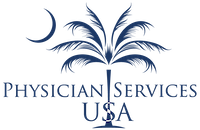Physician Lesson # 2 : “Charge Adjustments-They Could Actually Be Cash”
Every physician practice has adjustments. Understanding your practices adjustments is not only good business management, it could actually mean more money in your pocket.
Every charge a practice generates turns into either cash or adjustments. I don’t have to tell you that cash is better than adjustments.
Every practice should know their average adjustment percentage. (last 12 months adjustments/last 12 months charges) This average should be used to compare with the adjustment percentage of our last completed month. If the last completed month’s adjustment percentage is significantly higher or lower than you should know why. Were your payments higher this month? If so, this could explain why your adjustments were higher than average. Did you write-off a lot of bad debt last month? This too could explain why your last completed month’s adjustments were higher than average.
As long as you can explain a higher or lower than average adjustment percentage then you are probably okay. If you can’t then additional questions need to be asked and explained. It is a good practice to categorize your adjustments so you can better analyze them.
Some of the common charge adjustments are as following:
- Contractual Adjustment: A part of a patient’s bill that a doctor or hospital must write-off (not charge for) because of billing agreements with the insurance company. Adjustments, or write-off’s are the dollars that are adjusted off a patient account for any reason. The Contractual Adjustment is the most common type of adjustment.
- Bad Debt: Any bill submitted for payment by a third party payer or patient which is not paid in full, and unlikely to be paid for various reasons. (unrecoverable debt)
- Timely Filing: One of the many things that a good medical biller has to keep track of is the timely manner in which his or her claims are being sent to insurance companies. In other words, a good medical biller has to make sure that all claims are sent within a specified time frame. If claims are not sent out within the timely filing limit that insurance companies allow then the claim will be denied.
- Small Balance: Some believe that an effective tool in patient account management is using small balance adjustments to effectively resolve these accounts. Each practice should determine its small balance write-of so that staff is not spending time chasing small balances. Ranges typically vary from $2.00-$10.00.
- Billed in Error: Common billing errors that were created by medical billers are as following:
- Entering incorrect information for the provider (name, address, contact information, etc.)
- Entering incorrect information for the patient (name, sex, date of birth, insurance ID information, etc.)
- Entering incorrect information for the insurance provider (policy numbers, address, contact information, etc.)
- Inputting the wrong codes or confusing codes such as CPT codes, point of service codes, or ICD-10 codes
- Entering too few or too many digits for ICD-10-CM codes
- Inputting mismatched treatment and diagnostic codes
- Forgetting to input codes at all for services performed by a physician or another healthcare official
Another good practice for management is to pull random EOB’s and audit adjustments for accuracy. Putting your eyes on EOB’s and comparing how they were entered in the practice management system also ensures honesty and accuracy. Remember, charge adjustments could actually be cash and bringing in cash flow is vital to making your practice thrive.
Physician Services, USA can help you analyze your practice adjustments. Give us a call today for a FREE A/R Analysis: (800) 599-7183

